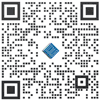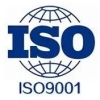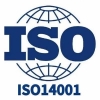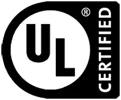Nanomaterials and Sensing technologies: Opening a new chapter in sensing the world

The improvement of perception ability has always been an important symbol of human scientific and technological progress. From initially relying on the senses to understand the world, to the invention of various instruments to extend the scope of perception, human beings continue to break the limits of perception. In this era of rapid development of science and technology, the emergence of nanomaterials has brought revolutionary breakthroughs to sensing technology. The unique physical and chemical properties of nanomaterials make them show unprecedented advantages in terms of sensitivity, selectivity and response speed. This advantage is not only reflected in the improvement of technical parameters, but more importantly, it opens a new dimension of human perception of the world. The combination of nanomaterials and sensing technology is reshaping the way we perceive the microscopic world and pushing the perception technology to a higher level.
一.Nanomaterials: the core driver of perceptual technological change
Because of their unique surface effect, quantum size effect and small size effect, nanomaterials show completely different characteristics from traditional materials. These characteristics make nanomaterials have incomparable advantages in the field of sensing. For example, the surface plasmon resonance effect of gold nanoparticles enables them to respond sensitively to changes in the refractive index of the surrounding medium, which is widely used in biomolecular detection.
The emergence of two-dimensional materials such as carbon nanotubes and graphene has pushed sensing technology to new heights. These materials have an extremely high specific surface area and excellent electrical properties, enabling detection sensitivity at the single-molecule level. Studies have shown that graphene-based FET sensors can detect biomolecules with concentrations as low as 10^-15 mol/L, which is several orders of magnitude more sensitive than traditional sensors.
In the field of environmental monitoring, nanomaterials also show great potential. The zinc oxide nanowire sensor can monitor harmful gases in the air at the ppb level in real time, with a response time that is only one-tenth of that of conventional sensors. This fast response characteristic makes the environmental monitoring change from regular sampling analysis to real-time dynamic monitoring, which greatly improves the environmental early warning ability.
二.Technological breakthrough: from the laboratory to the practical application of the leap
The application of nanomaterials in the field of biomedical detection is changing the traditional medical diagnosis model. Quantum dot labeling technology enables real-time imaging at the single-cell level and provides a powerful tool for early cancer diagnosis. Researchers have developed an array of nanowire sensors that can simultaneously detect multiple cancer markers, reducing diagnostic time from days to hours.
In terms of environmental monitoring, the nanosensor network realizes the accurate positioning and real-time tracking of pollutants. For example, the integration of nanosensors into the drone platform can build a three-dimensional environmental monitoring network to achieve comprehensive monitoring of the atmosphere, water and soil. This monitoring method not only improves the efficiency of data collection, but also can accurately locate the pollution source and provide scientific basis for environmental governance.
The field of industrial inspection has also undergone profound changes due to nanosensing technology. The stress sensor based on nanomaterials can be embedded in the building structure to monitor the stress change of the building in real time and provide guarantee for the safe operation of major projects. In the aerospace sector, nanosensors can withstand extreme environments and provide accurate condition monitoring data for aircraft.
三.Future Vision: The infinite possibilities of perceptual technology
The combination of nano-sensing technology and artificial intelligence is creating a new era of intelligent perception. Deep analysis of massive sensor data through machine learning algorithms enables more accurate predictions and decisions. For example, in the construction of smart cities, nanosensor networks combined with AI algorithms can achieve intelligent regulation of traffic flow and precise governance of environmental pollution.
In the medical field, the combination of implantable nanosensors and artificial intelligence diagnostic systems will promote the development of personalized medicine. The system can monitor patients' physiological indicators in real time and give early warning of health risks through AI analysis, thus achieving early prevention and precise treatment of diseases.
The continuous emergence of new nanomaterials provides more possibilities for the development of sensing technology. For example, nanomaterials with self-healing capabilities can extend the service life of sensors, and smart responsive materials can automatically adjust sensing performance according to environmental changes. These innovations will drive sensing technology to become smarter and more reliable.
The combination of nanomaterials and sensing technology not only brings a leap in technical performance, but more importantly, opens up a new way for human cognition of the world. This change is profoundly affecting all fields of scientific research, industrial production and social life. As technology continues to advance, the boundaries of human perception will continue to expand, and our understanding of the world will become deeper and more comprehensive. This perceptual revolution fueled by nanomaterials is reshaping the way humans interact with the world and propelling civilization to higher levels. In this new era, perception is no longer just the process of receiving information, but has become an important tool for understanding and transforming the world.
您可能感興趣的產品
 |
CLP0224FPXXXZ01A | AC/DC CONVERTER 24V 200W | 6516 More on Order |
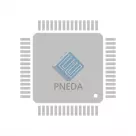 |
ATS020A0X3-SRZ | DC DC CONVERTER | 2394 More on Order |
 |
AXH010A0P9-SRZ | DC DC CONVERTER 1.2V 12W | 3096 More on Order |
 |
ESTW025A0F641-HZ | DC DC CONVERTER 3.3V 83W | 4500 More on Order |
 |
KNW013A0A4-88SRZ | DC DC CONVERTER 5V 65W | 8388 More on Order |
 |
KNW020A0F41-SRZ | DC DC CONVERTER 3.3V 66W | 2988 More on Order |
 |
SW001A0C91Z | DC DC CONVERTER 15V 15W | 8334 More on Order |
 |
QRW025A0A1Z | DC DC CONVERTER 5V 125W | 8046 More on Order |
 |
QPW060A0M1 | DC DC CONVERTER 1.5V 90W | 4932 More on Order |
 |
QHW050G71 | DC DC CONVERTER 2.5V 25W | 4482 More on Order |
 |
QHW050F81 | DC DC CONVERTER 3.3V 33W | 5958 More on Order |
 |
MW010A | DC DC CONVERTER 5V 10W | 6714 More on Order |
 |
JW150F1-T | DC DC CONVERTER 3.3V 99W | 2178 More on Order |
 |
HW010A0G1-S | DC DC CONVERTER 2.5V 25W | 3508 More on Order |
 |
CC025ABK-M | DC DC CONVERTER 5V +/-12V 25W | 5634 More on Order |
 |
EBVW017A0S14R0641Z | DC DC CONVERTER 14V 238W | 4320 More on Order |
 |
ESTW010A0B41Z | DC DC CONVERTER 12V 120W | 7758 More on Order |
 |
ESTW015A0A41Z | DC DC CONVERTER 5V 75W | 7308 More on Order |
 |
SHHD001A3B41-SRZ | DC DC CONVERTER 12V 15W | 6426 More on Order |
 |
EQW020A0F1Z | DC DC CONVERTER 3.3V 66W | 4752 More on Order |
 |
IND027XW | DC DC CONVERTER 3-18V 27W | 8784 More on Order |
 |
EHHD015A0A41-HZ | DC DC CONVERTER 5V 75W | 12936 More on Order |
 |
ATH010A0X3-SRZ | DC DC CONVERTER 0.8-3.6V 36W | 15948 More on Order |
 |
AXA005A0XZ | DC DC CONVERTER 0.8-5.5V 27W | 25452 More on Order |
